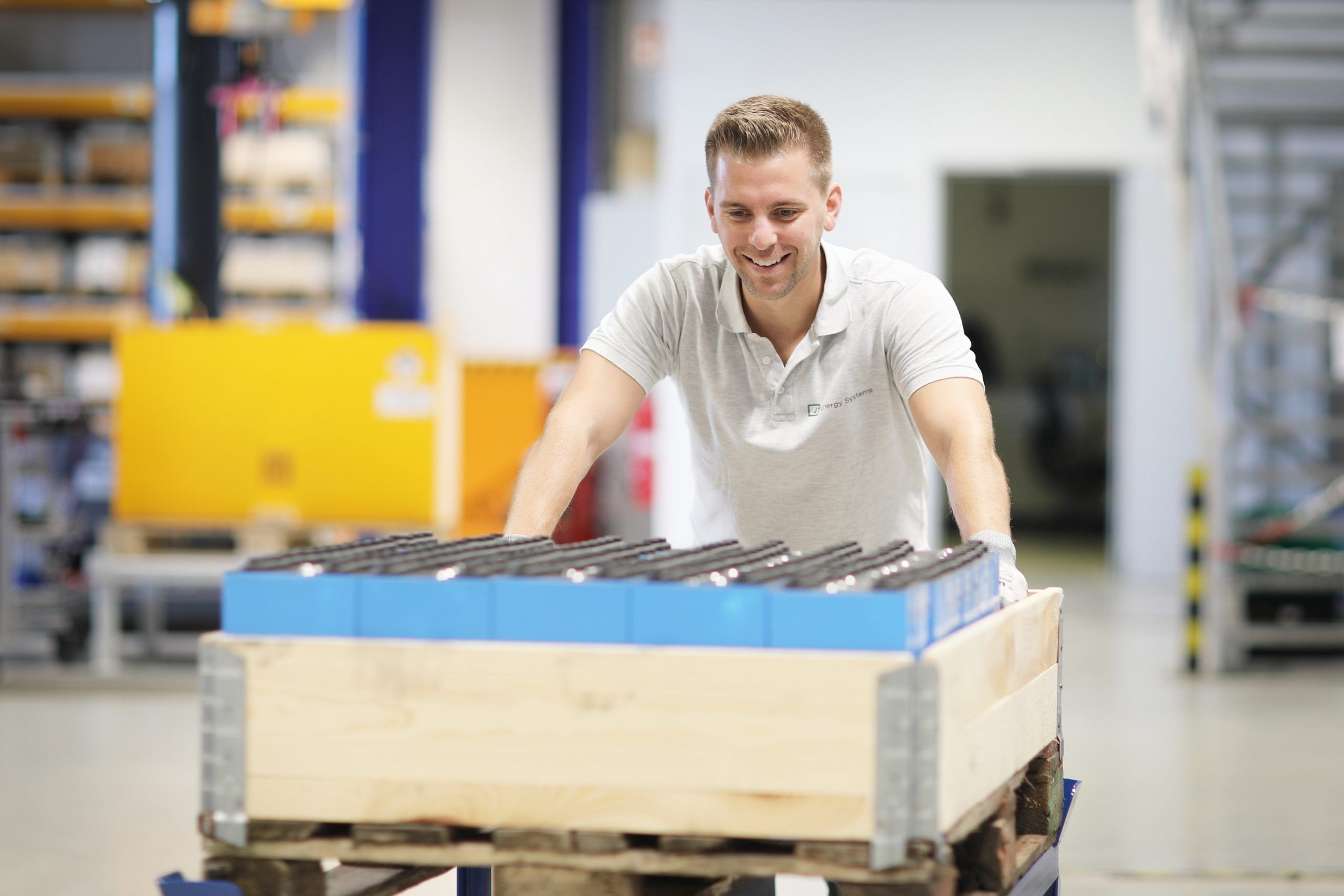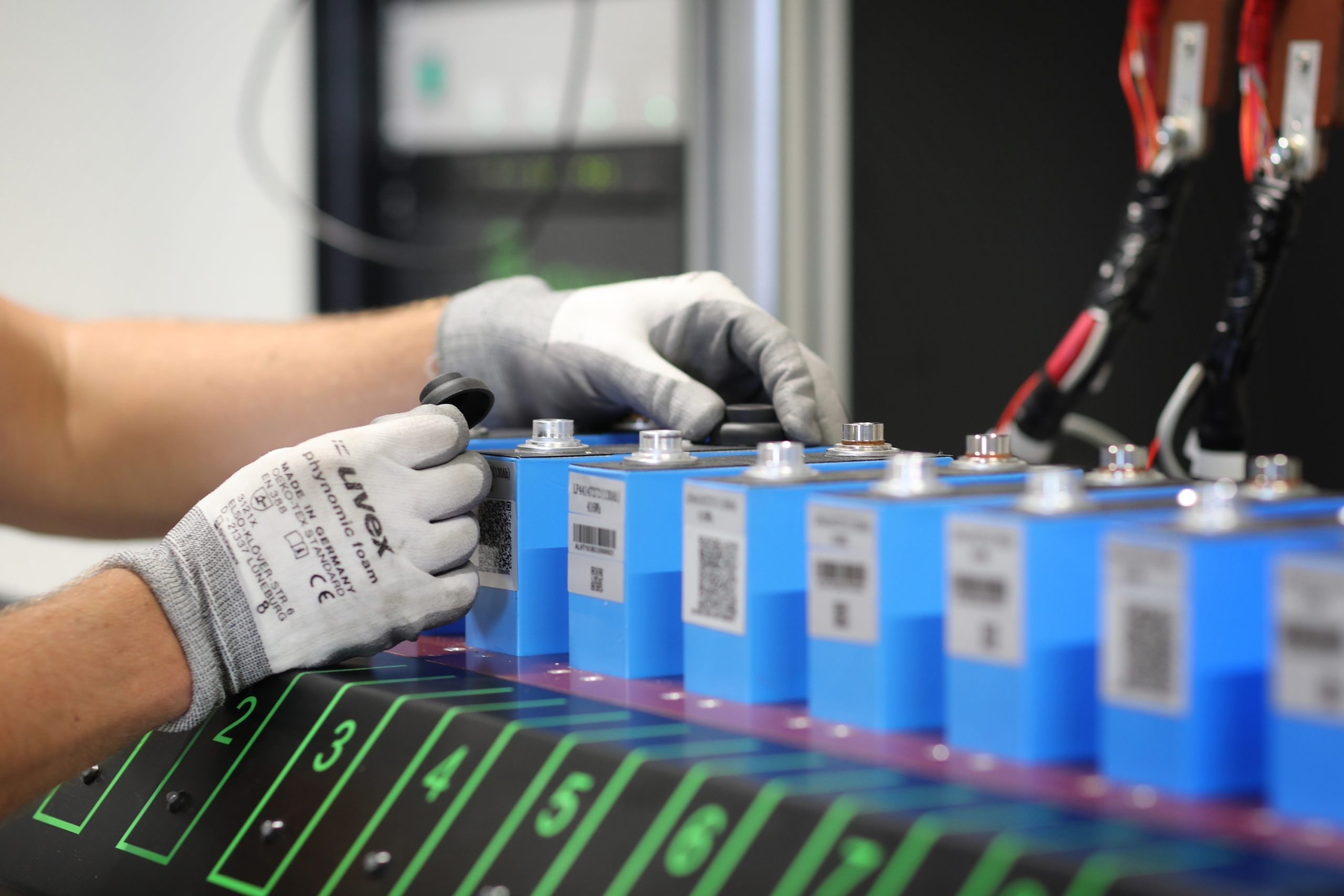Definition: What does Second Life mean in the context of batteries?
The term “second life” refers to a second phase of battery use that begins after their original use in a particular device or vehicle. If a battery is no longer suitable for its original purpose, it can often be used in other applications before it is recycled or thermally recovered. For example, used batteries can be reused for energy storage for renewable energies in battery storage systems.
The idea behind using batteries in Second Life is to extend their service life and save resources. This results in economic advantages and less electrical waste is produced.
NOVUM’s AI-based technology provides the prerequisites for testing large quantities of batteries in a matter of seconds and at low cost and then giving them a second life. The safety risks arising from the use of second-life batteries in battery storage systems are minimized by 24/7 AI monitoring.
The use of used batteries is therefore definitely recommended for all companies that generate a lot of used batteries or require a lot of energy.

What criteria must a battery meet so that it can be reused in a second life?
It is essential to test batteries of all types before using them for a second life. At NOVUM, this can be done quickly, cost-effectively and without knowledge of the battery history. The data collected provides information on the following aspects:
- Residual capacity: For a battery to be used in a used vehicle or in battery storage, for example, it needs a sufficiently high residual capacity. As soon as we know which applications batteries are planned for, we can check within seconds on our AI-based stationary test systems whether they meet the requirements.
- Acceptable state of health: The battery cells must be in a reasonable condition. In particular, very uneven ageing of individual cells can impair the performance of a battery and is associated with risks.
- No physical defects: A battery that already shows obvious defects from the outside should not be used in a second life under any circumstances. However, many problems such as dendrite formation can only be identified in the AI test. It is therefore particularly important not to rely solely on data from the battery management system.
- Reasonable charging capacity: The battery should still be able to be charged and discharged efficiently. A battery that does not have sufficient charging and discharging efficiency would not be suitable for many applications.
- Temperature tolerance: A battery must also function well under the operating conditions of the new application. This means that it should be able to withstand a corresponding range of temperatures.
- Compatibility with the application: Not every battery is suitable for every application. However, batteries that only have a low residual capacity can be used for short distances in intralogistics or in stationary battery storage systems, for example.
- Functioning battery management system: The battery management system must also be checked for functionality and, in case of doubt, replaced before a battery is used in Second Life. When changing from a mobile application to a stationary application, the BMS should always be replaced and adapted to the new requirements.
How is the suitability of batteries for reuse in a second life tested?
NOVUM’s battery diagnostics combines impedance spectroscopy and artificial intelligence. With the help of our Battery Analyzer or our Cell Analyzer, current pulses are sent into the battery or cell, which generate an image of the battery chemistry in the form of a curve. This is analyzed by NOVUM-KI in a matter of seconds in order to derive precise information about the condition of battery cells, battery modules and battery packs. Important to know: Unlike a normal internal resistance measurement, NOVUM measures at many different points (frequencies).
After a few seconds, the data is clearly displayed to our customers on a screen next to the test system.

What are the regulatory challenges of using second-life batteries?
The regulatory requirements for the reuse of batteries vary from region to region and country to country. You should clarify the following aspects before reusing batteries after testing with NOVUM technology in a second life.
- Environmental requirements and disposal regulations:
Specific requirements for the collection, storage, transportation and treatment of batteries are laid down in environmental regulations and disposal regulations. These vary from country to country.
- Dangerous goods transportation regulations:
Like all electrochemical systems, batteries are dangerous. In particular, the transportation of used batteries is subject to regulations. They are considered dangerous goods.
- Certifications:
The reuse of batteries must sometimes comply with certain certifications to ensure that they meet the required quality and safety standards. At NOVUM’s stationary test systems, a label is issued for each battery with which you can prove that we have tested the battery and assigned it to a specific quality category.
- Import and export restrictions:
Depending on the country, there may be restrictions on the import or export of used batteries. Find out about any regulations that affect you and your business partners.
Would you like to find out more about possible applications for your used batteries? Or would you like to find out more about NOVUM’s AI-based test systems? Then feel free to contact us. We look forward to getting to know you and advising you.




